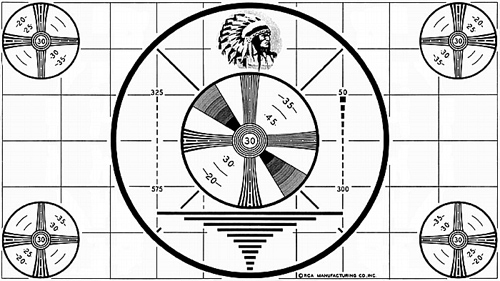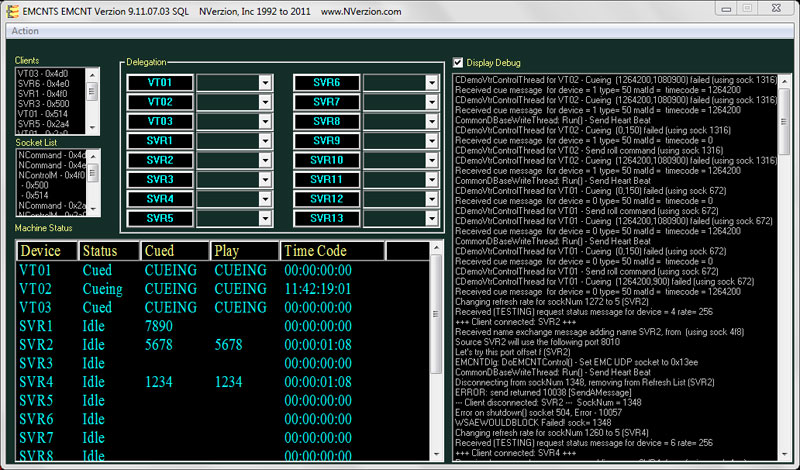EMC Architecture
The basic premise of EMC is you should be able to control any controllable device across a single, obviously shareable, communication line. One very innovative, even though now it is commonplace, is the idea that the controlling device does not need to know much about the device it is controlling. It does not need to know where the controlled device is physically located and, in most cases, does not need to know what kind of device it is.
This is accomplished by using, what has become the standard, Internet Protocol or IP. Subsets of IP are TCP and UDP. TCP is akin to a phone call where both parties have a reliable dedicated communication line. UDP is akin to a broadcast where everyone can listen, if they want, but there is no feedback to the broadcasting device. TCP is guaranteed transmission and UDP is not.

Every device in an EMC environment is given a unique name, such as VTR1, VTR2 Server5, NEW1, etc. Applications, such as NControl, NTime, NGest etc, are configured with a list of device names that they can control. When an application needs to control a particular device it uses UDP to try to find the device it wants to control. The application broadcasts, or yells, across the network the name of the device it wants to control and its own IP address.
If you had multiple EMC hardware out there, all connected to different devices, only one is going to have a device that matches the name that the application is broadcasting. All the EMC hardware hear the same broadcast but only one is interested. The EMC hardware that has a device that matches what the application is trying to control uses the applications IP address (also sent in the broadcast) to establish TCP communication with the application. Now the two parties have dedicated, guaranteed, communication between the two.
The EMC protocol is a simple means of communicating machine commands. Commands are as simple as Stop, Play, Record, etc., and can be as complex as graphic pages, or cueing particular clips on a video server with specific in points and durations. The EMC hardware takes the standard EMC commands and converts them to match the protocol of the device it is controlling.
The EMC routing commands are very simple. Take an input to an output. The controlling application simply sends the input name, a comma, and the output name. EMC Router has a configuration table that translates the names to physical inputs, outputs and levels associated with the names that it is passed. EMC Router is configured to know what type of Router it is controlling and converts the EMC commands to the devices protocol to attain the desired switch.
| HEADER |
|---|
| Data |
| Data w/ blue background |

